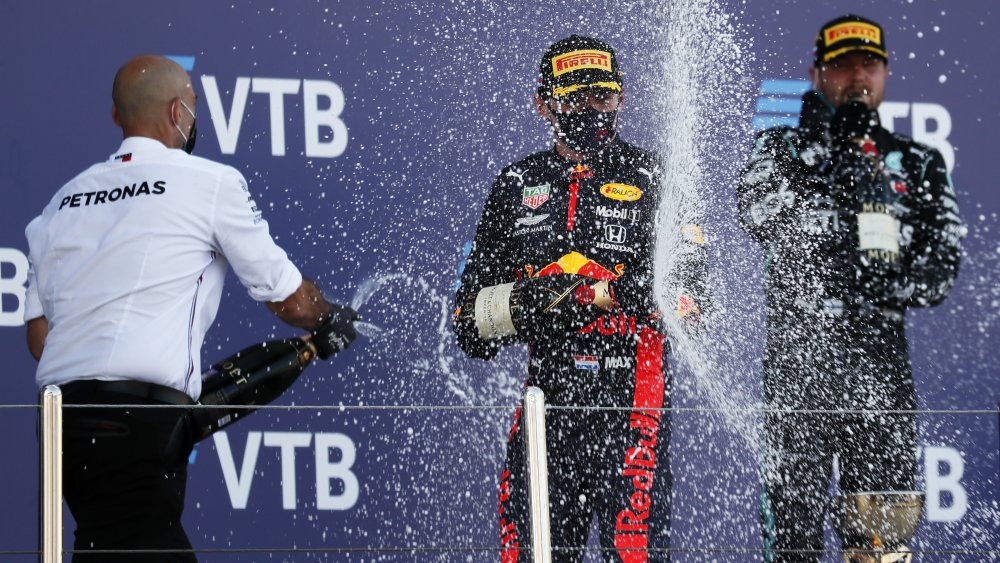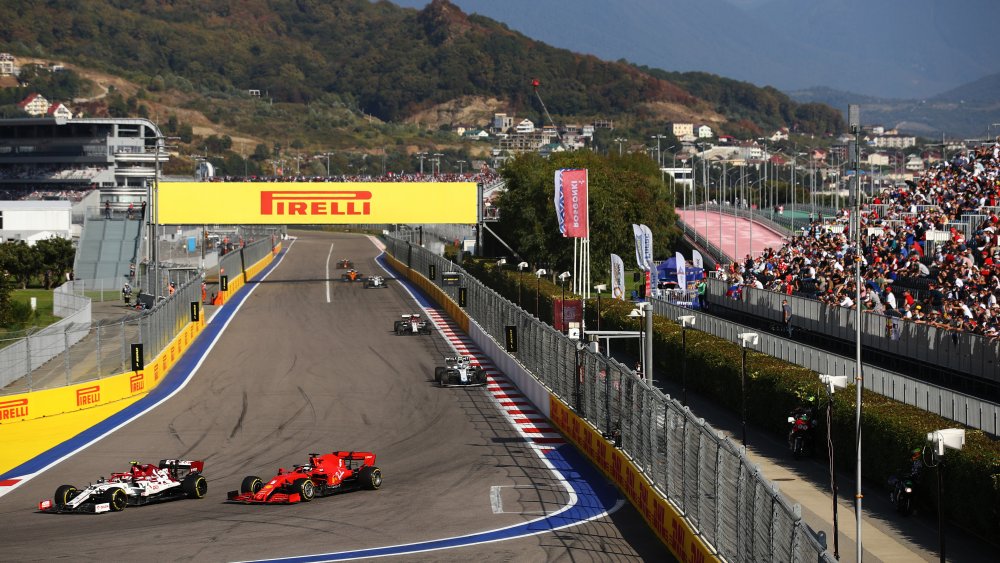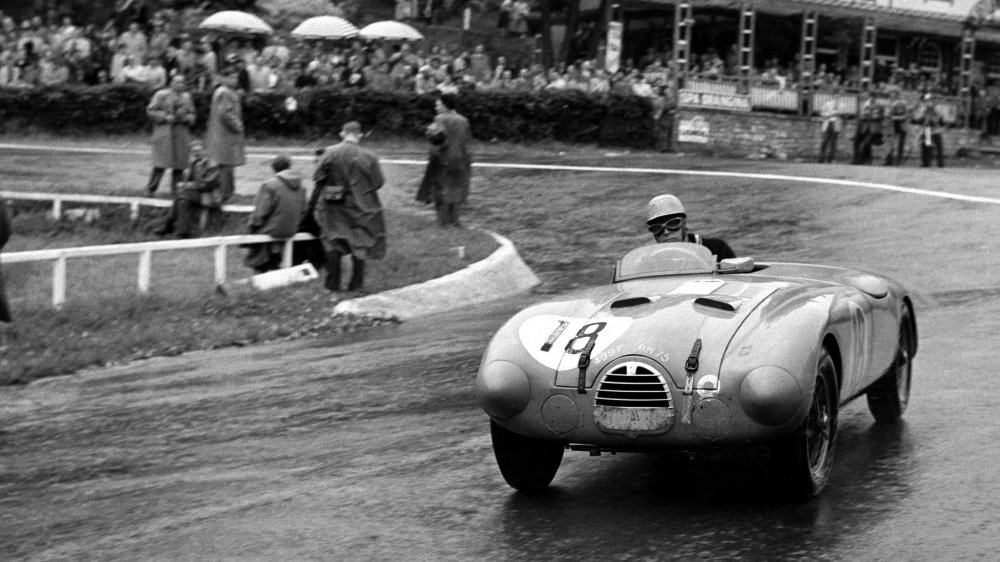The Bizarre Truth About The First Formula 1 Race
When you watch Formula 1, you're probably amazed at how graceful everything looks. And it's not just how fast the cars are going. It just feels like they've got the whole dance down pat. But while the drivers and the pit crews now have practice, and the teams present their best drivers, the first few races were more wacky races than the sleek feat of organization we see today.
Formula 1 races officially began in 1946, though of course racing in general had been around for a while. One of the most prominent social events in the 1920s was the Grand Prix, and people responded — they wanted more. The Federation Internationale de l'Automobile (FIA) was established with standardized rules for motor racing. The group created world championships and made sure that all drivers and cars complied with their rules. This is where the name Formula 1 comes from; it refers to the set of regulations they all have to follow.
Originally, the plan was to start this new kind of race in the 1930s, but, ESPN reported, it had to be shelved at the onslaught of World War II. The idea was rekindled in 1946 to help buoy morale in Europe after the war. That year was the first racing season of Formula 1, with a world championship race occurring the next year. As ESPN pointed out, it took until 1950 for all the details to be hammered out, however, and the first championship held.
Royalty on and off the track
That first championship race was confusing from the start. Even with standardized rules, everything was new. It didn't even have one official name. According to the official Formula 1 website, that first 1950 race was held at Silverstone, England. Officially, it was the Grand Prix d'Europe, but because it was held in Britain, the English felt slighted. So people also incorporated the name British Grand Prix to the championship title.
Unlike today, where people watching Formula 1 races sit on bleachers, people crowded around the track. Around 120,000 spectators gathered for this first race. But they had to make room for several important guests: King George VI, his wife Queen Elizabeth, the future Queen Elizabeth II, Princess Margaret, and the Lord and Lady Mountbatten attended the race. This was the first, and only, time a reigning monarch attended a British motor race, said the Formula 1 website. (The Royal Family seems to favor horse racing, as we saw on The Crown.)
The British Royal Family weren't the only royalty attending. Aristocrats were among the 21 drivers who took part in the race. Prince Birabongse Bhanudej Bhanubandh, or Prince Bira, from Thailand, was a notable racer, and remains the only Thai to drive in a Formula 1 competition. Before the championship, Prince Bira qualified fifth, but his car ran out of fuel, and he didn't finish the race. Swiss Baron Emmanuel de Graffenried also participated, but his vehicle also suffered engine problems.
There was some roadkill
Royalty weren't the only exciting drivers in the first race. Jazz musician Johnny Claes qualified last to the championships. Despite that, he finished 11th in the field. Claes, however, was far more successful as a musician than as a race car driver. Even the favorites to win the race caught the eye of fans for more than their driving mastery. Coincidentally, the three pre-race favorites all had surnames starting with Fa. They were called the three Fs: Guiseppe 'Nino' Farina, Luigi Fagioli, and Juan Manuel Fangio were tipped to win it big for the Alfa Romeo team. ESPN reported that Farina took home the title that year; Fangio would win the next year.
It wasn't even the fans or the drivers that were fascinating in the first race. You'd think 120,000 spectators and the roar of several cars going around a track would scare off the wildlife. Not so. The official Formula 1 website wrote that the Alfa Romeo team almost didn't finish because one of its cars hit a hare that somehow got through all of that craziness to enter the race track. The hare reportedly caused a significant dent on the car. RIP hare.
Today's Formula 1 certainly seems a lot calmer than the first race in the 1950s. Sure, there are barely any royal drivers anymore, but it's still a fun race to watch.


